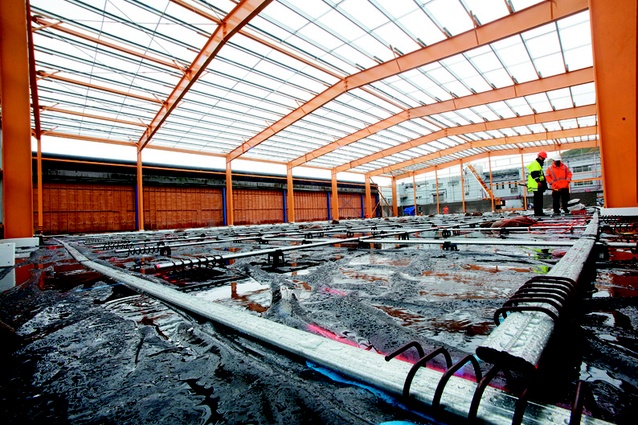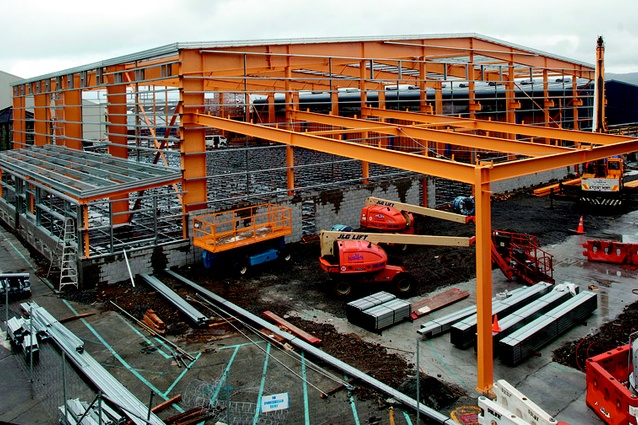Dulux factory upgrade
In a cooperative contract between Hawkins and client Dulux/Orica, paint manufacturing continued throughout the process of moving all its production from several sites to under one roof.
At first glance construction and paint manufacturing promise to mix like oil and water - two very different processes, each with their own staff, machinery and materials. But the unlikely mix of these two processes is alive and working at Dulux in Gracefield, Petone. The key is a cooperative contract between Dulux/Orica, and Hawkins Construction, a contractor that met the client’s requirements for flexibility, trust and an open attitude to discussion and change.
Dulux is expanding its water-based paint manufacturing operation and upgrading its onsite wastewater treatment plant. Distribution facilities are being replaced and storage expanded by building a finished goods warehouse. The plant had been improved since it was first built in 1937 but processes, products and technology continually change. While paint making has remained pretty much a matter of “big pots and mixers,” improved technologies and increased production of water-based paints made the upgrade essential to meet business objectives. Project Firebird as it is called took off in November 2009 and is on track for completion in September this year.
From the mezzanine floor in the new water-based manufacturing facility, Dulux project site manager Calvin Fransen points out how the flow of paint production is more streamlined than it was prior to this construction. Manufacturing is now under one roof, rather than in small, separate buildings. Long pipelines, 1,800m of steel, come in one end from the new, relocated tank farm. Raw materials mix in huge vats on the mezzanine floor, which was expanded to allow a new 5,000 litre disperser and two new 4,000 litre mixers to be installed. It also allows more space for the materials to be stored prior to make-up. Below, paint-filled tins trundle along a conveyor belt to a spot where two robotic arms clamp and lift four tins at a time onto pallets. Automated processes have replaced the human production line; now a few technicians operate computerised machines.
Construction of the new, 4,000sq m warehouse continued around the manufacturing processes, apart from a 20 day shut down in September to remove a section of the old 600sq m manufacturing building from over the top of the work areas. They retained the mezzanine floor of this building and extended it to contain the new mixing facilities. Before the shut down, manufacturing increased to meet business targets and production doubled to replace the gap left by Dulux Group’s flood stricken plant in Queensland. To build the new manufacturing plant around the old building they structured the design so it could be assembled from both sides, built up the walls to the height of the existing factory then capped it off.
Flexibility has characterised the project with the ability to adjust design and build within the parameters and milestones dictated by manufacturing objectives. While it was not a flat-out build, considering for instance they were working around 15 forklift movements every minute, there was no tolerance within the programme. Speed was of the essence before and during shut down. The aim was to avoid lifting 18 tonne pieces of steel over a working factory while material kept off site was clocking up storage fees. Much of the site has been redesigned to improve workflows and traffic management.
Construction interruptions to paint production were minor and the project was delivered on cost and on time, something they thought could be achieved only on a green-field site projects.













